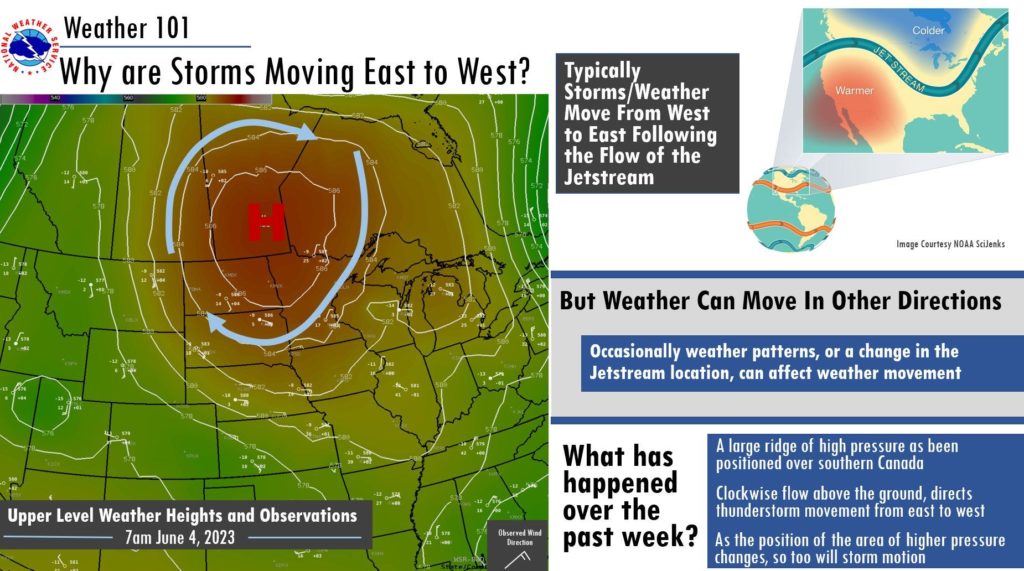Why Are Thunderstorms Moving East to West?

Weather patterns have an incredible ability to captivate our attention, especially when they defy our expectations. One such phenomenon is the occurrence of storms moving from east to west, which may seem counterintuitive to those accustomed to the traditional west-to-east movement. In this blog post, we will explore the underlying factors behind this intriguing meteorological occurrence and shed light on the reasons why these storms exhibit such peculiar behavior.
Understanding the Role of High Pressure:
To comprehend why storms are moving from east to west, we must first delve into the influence of high-pressure systems. Over southern Canada, a vast area of high pressure has positioned itself, forming what is known as a ridge. High-pressure systems typically bring clear skies and stable conditions, and in this case, the clockwise flow around the ridge has caused winds to blow from the east.
The Influence of Wind Patterns:
The eastward flow of winds resulting from the clockwise rotation around the high-pressure system plays a crucial role in steering the storm systems. These winds act as a guiding force, propelling the storms from east to west. It is important to note that wind patterns are highly influential in determining the trajectory of weather systems, as they interact with various atmospheric factors.
The Jet Streams Influence:
While the current movement of storms from east to west may seem atypical, it is essential to remember that weather patterns are dynamic and subject to change. Typically, storms move from west to east, following the prevailing flow of the jet stream. The jet stream, a powerful high-altitude wind current, plays a vital role in shaping weather patterns across the globe. As the area of high pressure over southern Canada evolves or dissipates, the storm motions will eventually revert to their more conventional west-to-east movement in alignment with the prevailing jet stream flow.
Story Photo: National Weather Service Sioux Falls, South Dakota